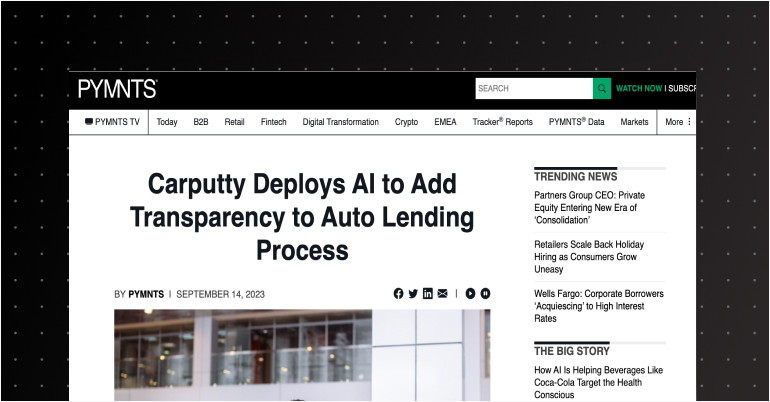AI Takes the Wheel

How I Transformed Carputty's Application Processing by 1200%

Carputty was disrupting auto financing with an innovative line-of-credit model. When growth surged, our application processing system became a critical bottleneck — handling only 8% of daily volume. The resulting backlog risked customer satisfaction and slowed business momentum. We needed more than a quick fix; we needed a strategic redesign that could scale.
The Investigation

Partnering with the product lead, I led a systematic behavioral analysis using the double diamond framework. Through 12 in-depth interviews across applicants, member success agents, and underwriters, we uncovered that 80% of all friction came from a single choke point: income verification.
Hotjar recordings and Google Analytics confirmed the interviews’ findings — this wasn’t just a slow process, it was a broken one. Complex income types (freelance, gig work, irregular deposits) required constant manual intervention through calls, emails, and repeated application resubmissions.
Our analysis revealed a crucial truth: not all applications are created equal. W-2 income could be processed through our existing rules engine with minimal oversight. But edge cases demanded nuanced human judgment. This insight reframed our challenge — the goal wasn’t replacing analysts, it was scaling their expertise.
Insight: Handling complex income types like gig economy earnings slowed applications. We asked: Can we automate categorization to process more applications faster, while preserving analyst oversight?
Design Principles
- Augment, don't replace: Preserve analysts’ decision-making authority while removing repetitive tasks.
- Learn from expertise: Train AI using real analyst categorization patterns.
- Transparent automation: Make AI decisions visible and correctable to build trust.
- Flexible workflows: Enable both rapid approvals and deep investigations.
Design Decisions
Rather than jump to full automation, I proposed a phased approach aligned with underwriters’ existing workflows:
- Base Design – Build a clean, reliable system that works without AI.
- Upgrade 1 – Add decision criteria to highlight potential AI-ready cases.
- Upgrade 2 – Suggest categorizations based on analyst patterns.
- Upgrade 3 – Auto-approve simple cases; flag complex cases for review.
This incremental rollout allowed analysts to validate AI suggestions, building confidence and ensuring we preserved quality while accelerating throughput.



Final Designs



The AI began to identify patterns like Uber driver income or rental property deposits and recommend categorizations with reasoning. Analyst corrections fed back into the model, improving future performance.
Key Design Decisions
- Transparency: Analysts could see how specific the AI was about each categorization
- Preserve manual override: Every automated decision could be corrected
- Batch processing: Enable reviewing multiple similar cases simultaneously
- Audit trails: Track both human and AI decisions for compliance (Backend)
The Business Impact
Increase in Application Processing Speed
New Underwriters Hired
AI-processed applications per day
Weeks to Implement
Industry Recognition
This work didn’t just stay inside the walls of our team. The AI-driven transparency we designed for complex, regulated products caught the attention of the broader payments industry. Our approach was featured in PYMNTS, a leading publication covering innovation in financial services and payments.

Making it into that conversation validated two things: first, that our design choices resonated beyond a single company, and second, that AI in financial UX is now recognized as a critical lever for building trust, transparency, and adoption. For me, the recognition underscored what I believe about product design in regulated spaces: when you simplify complexity without losing rigor, the industry notices.


